Why Fast Data is Key to Trustworthy Community Engagement in K-12











Every district leader knows that passing a bond or reconfiguring school boundaries requires a deep level of community trust. But many don't realize that the foundation of that trust is built—or broken—long before the vote, right in your everyday community engagement initiatives.
The way a district engages its community and acts on its feedback builds the infrastructure for trust. When trust is weak, every major initiative requiring community approval risks failure.
When a district invests its staff time and financial resources in any major decision-making process, it’s vital to ensure that community engagement initiatives are more than just box-ticking exercises—they need to deliver real ROI.
Successful community engagement starts with a foundation of solid data, engages a broad range of voices, allows you to discover insights quickly, and culminates in successfully achieving the mandates your district needs to thrive.
This post will explore ways to optimize your community engagement investments and foster long-term goodwill with stakeholders by leveraging your data effectively, streamlining data analysis, and demonstrating respect and responsiveness to your community’s feedback.
In this Article
The lagging feedback loop hurting community trust in schools
Your school has done its annual climate survey. Six thousand participants—staff, students, parents, and community members—offer feedback. The survey gathered both quantitative and qualitative responses. Responses indicate they want the district to focus on:
- Transportation
- Safety and incident prevention
- Facilities
- Staff experience
- Student experience
- Parent involvement
Many SIS platforms only provide basic reports and cumbersome data analysis. In the above example, leaders can see the percentages behind their community’s thinking but not their actual thoughts. Digging into their concerns in these priority areas requires time-consuming and budget-consuming follow-up, risking the data going stale and the community feeling ignored.
This delay isn't just a data problem; it's a trust problem. Every week that passes without a response tells your community their time wasn't valued. When your community sees a pattern of ask but no action, participation declines, and trust in district leadership erodes.
From reaction to real-time action
Dr. Tammy Blakely, Executive Director of Student Support Services at Irvine Unified School District (IUSD), knows that slow data analysis can make community engagements seem like a waste of time. Before switching to ThoughtExchange, their previous survey provider took up to 12 weeks to return results. “By the time we received data, the school year had basically ended,” says Dr. Blakely. “And the feedback from the principals was that it was no longer useful.”
Real-time data analysis transforms the engagement process. In the case of IUSD, individual school sites were able to monitor who they were hearing from and target specific groups for more engagement. Dr. Blakely’s team could identify which outreach methods were successful, and schools could ensure they were reaching everyone.
Instead of waiting months, principals had immediate feedback on what was positively and negatively impacting their school climate, allowing them to take immediate action. “They could take that data to their school site councils, to their leadership teams, and make it immediately useful,” says Dr. Blakely. “ThoughtExchange allows them to focus sooner; rather than having to dig through the data, it’s readily available to them."
Build community trust in schools through rapid response
Next year is too late. Leaders must act quickly to make effective change and build community trust. Failing to address important issues promptly frustrates principals, staff, and community members who just want to know you hear them and are acting on their feedback.
When staff, students, parents, and community members see their feedback addressed and acted on quickly, it can be game-changing for a district’s relationship with its stakeholders.
Fast follow-up on community engagement:
- Encourages a culture of open communication and active participation
- Demonstrates the intention for continuous improvement
- Builds trust in district responsiveness and decision-making
Watch: Dr. Anna Nolin on building trust in your community.
The tools you need for instant insight
Platforms specializing in qualitative data collection and analysis ensure that participants can share what’s top-of-mind and that leaders can draw multiple data sets from their community engagement initiatives. Such platforms allow leaders to optimize their time and financial resources and improve benchmarking, allowing administration to focus on decision-making and leading.
With this kind of engagement, one larger engagement initiative quickly informs a wide range of decisions. Leaders can build a solid data set for benchmarking and improvement, and draw out solutions for retention, facilities, transportation, safety, and more.
Community engagement platforms like ThoughtExchange use sophisticated and trustworthy AI tools and analytics to amplify the human voice of your community. Our customers achieve their goals and create lasting change by quickly and easily connecting their community’s feedback to their plans and proposals.
“I believe that the people closest to the problem should have the loudest voice in solving it. ThoughtExchange helps me access that voice more easily. In my leadership, the single biggest differentiator that ThoughtExchange brings is as a strategic advisor to help me set my priority queue using feedback from my community.”
The future of community engagement is responsive
Many education leaders are stretched thin and lack dedicated data teams and on-demand analytics. As a result, there’s a high demand for solutions that can simplify workloads and deliver previously out-of-reach insights. That’s why leveraging community engagement platforms that allow for easy mixed-method data collection and flexible analysis can be a game-changer for school districts and their budgets. The path to passing a bond or successfully managing facility changes runs directly through efficient, action-oriented engagement that respects the community's time and input.
Your most valuable resources are the people around you—both your staff and your community members. By streamlining the data analysis process, leaders are investing in what truly matters: timely action and transparent communication that fosters community confidence.





